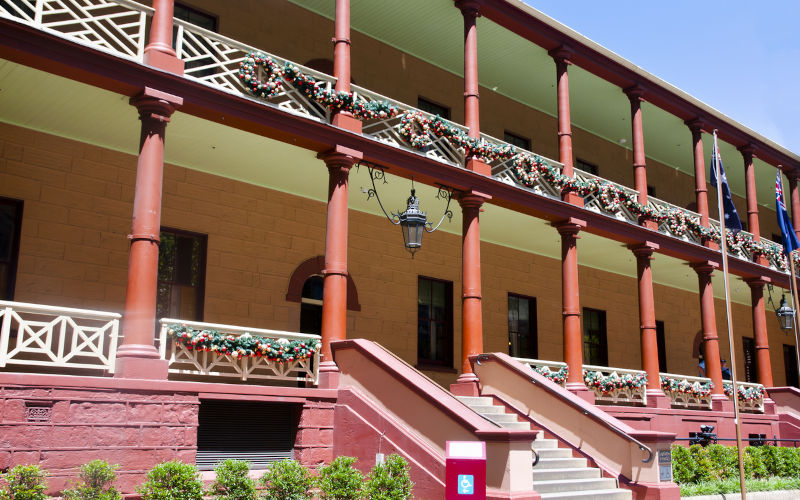Embedding indigenous advice in government policy key to real change
September 7, 2023
In discussions of the upcoming referendum on establishing an Aboriginal and Torres Strait Islander Voice, a question often raised is how will it make a difference? This has been difficult for advocates to address because instances of governments empowering our First Nations peoples are few and far between.
There is, however, a valuable example in NSW of the demonstrable benefits of having Aboriginal advisers working closely with government. This year marks 25 years since the Aboriginal Housing Office (AHO) took control of the provision of social housing for Aboriginal people in NSW.
The AHO model is not the same as the proposed model for the Voice, but it offers some relevant insights into the value to be gained from governments tapping into Indigenous knowledge and understanding. It has shown that having Aboriginal guidance at a high level in government (as well as regionally and locally), can provide many practical, often nuanced, benefits.
The AHO and its all-Aboriginal Board were established by an Act of the NSW Parliament in 1998. The AHOs main roles include funding new housing, developing culturally appropriate housing services, building the capacity of Aboriginal organisations to deliver and maintain rental housing (with wrap-around support where needed), and improving tenant pathways to home ownership.
Under the Act, Aboriginal Regional Housing Advisory Committees also provide an effective means to pinpoint different needs and priorities between and within regions, to forge links between local service agencies, and to promote accountability to local communities.
The AHO came into being at a time when Indigenous housing policy was failing. Multiple Commonwealth and State-funded programs operated in different and confusing ways in local communities, new housing was being built to general standards that were not fit-for-purpose, rent collection rates were poor adversely impacting housing maintenance, and under-resourced local organisations were struggling to support their tenants and prevent tenancy failures. There was also poor transparency around the use of Aboriginal housing funding the NSW Government had been sanctioned for failing to comply with funding requirements in the early 1990s.
Under the 1998 reform in NSW, Commonwealth and state funding was pooled and the AHO was given overall responsibility for managing Aboriginal housing policy, resource allocation, asset management and service standards. The AHOs governance means that AHO Directors and staff, through their Aboriginal Chief Executive, are directly accountable to the Minister for Housing, who in turn is accountable to the NSW Parliament for meeting the objects of the Act. This approach illustrates a point made recently by Noel Pearson: that partnership models involve First Nations people sharing responsibility with government.
In June 2022 the AHO had a property portfolio of over 6,000 dwellings valued at $2.8bn. In 2021-22, 87 new homes were built (a 13% growth rate) and over 6,300 AHO- and community-owned properties were upgraded. While there is a lot more to be done, much has already been achieved under the AHOs authority and impetus.
When most other jurisdictions went backwards, over the last 25 years NSW has retained a strong network of regulated Aboriginal housing organisations. This has averted the mainstreaming of all housing service delivery, providing more options for Aboriginal people. Today around 40% of all Aboriginal social housing tenant households in NSW live in Aboriginal-run housing.
Aboriginal employment has been strongly enhanced. The AHO has consistently maintained high numbers of Aboriginal employees: currently over 60% of its staff identify as Aboriginal. This helps to ensure that culture and lived experience shape programs and services and strengthens the relationship between officials and the communities they serve. AHO-funded programs have enabled economic development through engagement of Aboriginal businesses and tradespeople, especially in the fields of housing construction, maintenance and upgrading, and tenancy management. Today around 30% of all jobs created through AHO investment are going to Aboriginal people.
The work of the AHO includes many examples of service innovation that may not have arisen in a normal bureaucratic environment where a one-size-fits-all model tends to dominate, and new ideas are too risky or too expensive to pursue at scale. Examples include the AHOs award winning program to install hydro-panels that supply in-home pure drinking water in remote towns and their use of prefabricated housing pods as a rapid response to overcrowding and homelessness. In Western NSW, to reduce tenant electricity costs, 970 AHO properties have recently been fitted with solar panels delivered by two Aboriginal-owned companies.
The AHO model has demonstrated how embedding advice from Indigenous Australians in government processes can make a real difference in this case to address distinct housing needs and to reduce homelessness. It has also facilitated long-term cultural learning and adaptation within the public service.
As a senior AHO official once put it, why wouldnt governments want Indigenous knowledge and advice close at hand?

